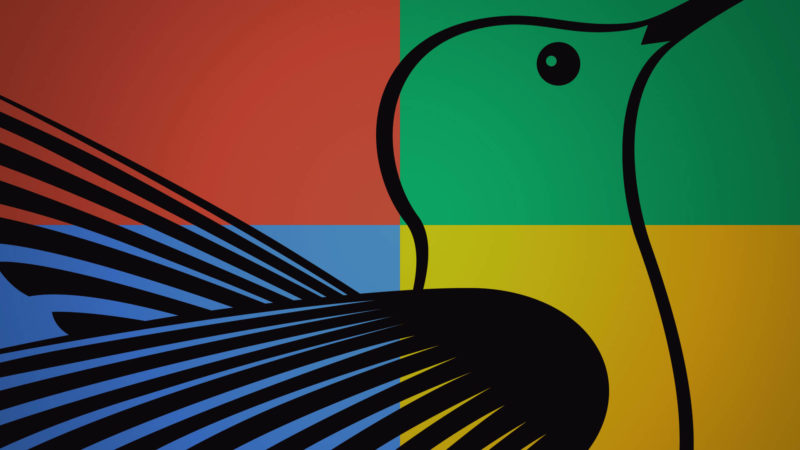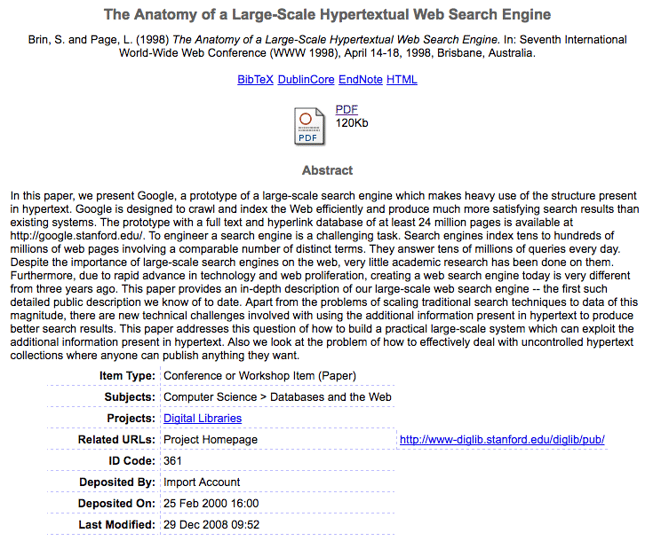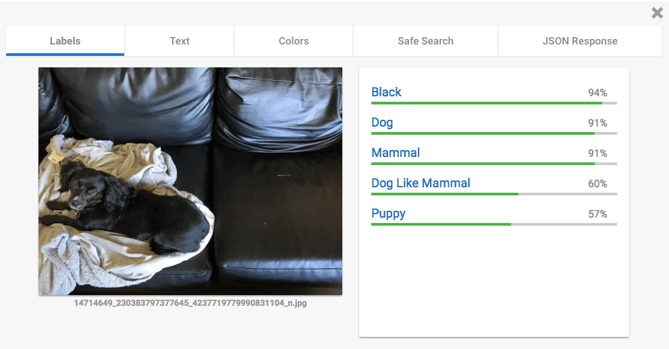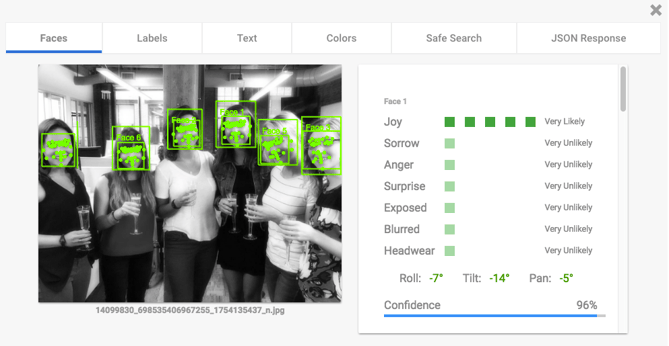
It’s not often that you see the word “fun” and “algorithm” in the same sentence. (Okay, fine. Maybe you do, if you’re a marketing nerd like I am.) But think about this: Google has really been around for over two decades. With a history like that, there's got to be at least some compelling trivia, right?
Believe it or not, algorithms are really cool. I mean, they get us our search results, after all.But how does Google's algorithm work? And how has it evolved over the course of so many years? 
We thought you might ask that, so we put together some fun facts about Google's algorithm, and how it's shaped the way we search today.
What the Heck Is an Algorithm, Anyway?
To quote Google itself, “Algorithms are the computer processes and formulas that take your questions and turn them into answers.” They cut through its estimated “trillions” of web pages in existence to find the information you’re looking for.
Think about that for a second. “Trillions.” One trillion, numerically, looks like this:
1,000,000,000,000
Imagine if there were no algorithms, and we had to somehow sift through that amount of information ourselves. Luckily, Google has developed an algorithm that can read -- at a pace few of us can begin to fathom -- different signals from these pages that indicate how likely they are to answer your search query.
But it’s not just about the words on the page. Algorithms can also read how recent the content is, how likely it is to be spam, and how it pertains to your location.
As marketers, all of this stuff matters. Where and how your pages rank in Google can make or break your organic search traffic, so it’s important to understand how the algorithm works and how to ethically optimize for it. What’s more, it’s crucial to be adaptable -- the Google algorithm has changed a lot over the years, and will continue to do so as it becomes even more user-friendly.
8 Fun Facts About Google's Algorithm
1) Google’s overall algorithm has had one name since 2013: Hummingbird.

Source: Search Engine Land
If you do keep up with the changes to Google’s algorithm, you’ve probably seen some colorful names assigned to them -- Panda, Penguin, and Pigeon to name a few.
However, those names have only been assigned to updates made to the overall algorithm itself -- which today is called Hummingbird. It was formally announced in September 2013 and created to make search results more “precise and fast” like the bird itself, according to Search Engine Land [SEL].
SEL has one of the best analogies we’ve seen to describe the algorithm at-large -- Hummingbird is a “recipe” with hundreds of “ingredients.” These ingredients are the different pieces that help the algorithm determine the quality of those trillions of pages, and how well any one of them might answer your search.
2) Google makes changes to its algorithm roughly 500 times per year.

Source: pyxle
SEO community Moz states that Google makes between 500-600 changes to its algorithm annually, most of which are so minor that the public doesn’t usually hear about them.
Even without those minor changes, however, Moz has recorded no less than 140 updates to the Google algorithm since 2000.
Because the list was fairly dense, I enlisted the help of a colleague to count the items accurately. In splitting it up into two sections -- the eight years before and after 2008, respectively -- we noticed something interesting. The first eight years only listed 25 updates of note, whereas the latter had 115.
So why have there been so many more updates in the recent years? It could have something to do with the massive increase in users. But it could also be about changes to the way we search. For one, we’re searching on our phones a lot more -- 51% percent of digital media is consumed via mobile -- which has led to more than one crackdown by Google on pages that aren’t optimized for such platforms.
We’re also starting to see an uptick in voice search. And while there currently aren’t precise formulas to plan or rank for those kinds of searches, we imagine that Google will start changing its algorithm for them -- after all, it’s seen a 3400% increase in voice queries since 2008.
Like we said -- understanding the algorithm requires agility. It’s only going to continue to change, so in order to maintain good search standing, marketers should learn to adapt.
3) One of the original goals was to cut through spammy content from advertisers.

Source: Stanford InfoLab
Google’s “history in depth” dates back roughly 20 years -- in 1997, co-founders Larry Page and Sergey Brin were working on their first search engine, which they then called BackRub.
Then, in 1998, the pair published a paper at Stanford titled “The Anatomy of a Large-Scale Hypertextual Web Search Engine.” That’s where we see one of the first mentions of PageRank, which is the technology that Google continues to use to help rank search results.
But there’s one thing in the admittedly dense text that really stood out. At the time of writing the paper, Page and Brin noted, “the predominant business model for commercial search engines is advertising. The goals of the advertising business model do not always correspond to providing quality search to users.”
We can’t help but geek out over the fact that Google remains loyal to that thesis. When I previously interviewed my colleague Marcus Andrews about the algorithm, he told me, "Google is very focused on the user."
In fact, you could say that’s why Google has continued to make so many changes to the algorithm. It’s finding new ways to get the best content to users.
Just have a look at the search engine's “Steps to a Google-friendly site” -- one of the first things listed is to “provide high-quality content on your pages.” Eighteen years later, Google is working toward the original vision of its founders.
4) PageRank was named after Google co-founder Larry Page.

Source: Stanford InfoLab
When the name “PageRank” is assigned to the technology that helps Google rank pages, it seems fairly intuitive. But it was actually named after one of Google’s co-founders, Larry Page, whose young mug can be found to the right in the image above.
PageRank itself has quite a history. While its technology was in many ways beneficial, it was also very confusing, even to some expert SEOs. That's why SEL published the in depth article, “What Is Google PageRank?” -- very few people understood it.
Google says that PageRank is what “looks at links between pages to determine their relevance.” But SEL says it’s more like a voting system, in which inbound links to a given page count as votes toward its authority. So, the more votes, the more authority. The clincher? Anyone could view a site's PageRank.
In spring of 2016, Google announced that while it would still be using PageRank technology to internally adjust its algorithm, the public would no longer be able to able to view any of its data. For some, that was happy news, according to SEL and its “retrospective on how [PageRank] ruined the web.” Apparently, PageRank's emphasis on being linked to created a lot of annoying, borderline spammy behavior -- like links becoming available for purchase.
Today, the technology for ranking has become more discerning, thanks in large part to MozRank, which is a “link popularity score.” To learn more about using MozRank for SEO and tracking competition, check out our HubSpot Academy guide here.
5) There's a Google Dance -- but it's not what it sounds like.

Source: Search Engine Land
Our inner marketing nerds wish that "The Google" was actually a physical dance move. In actuality, though, Google Dance was actually the name applied to the sudden changes to its rankings, back when the algorithm used to majorly change every month.
Marketing Land credits forum WebmasterWorld for originating the term, and also for assigning different geographically-inspired names to each dance, like "Boston" in February 2003 and "Florida" later that year. But Florida, it seems, was the last dance -- or the last salient one, anyway. That's when Google stopped making major updates to its algorithm every month, and instead started making the general under-the-radar adjustments it does today.
But to keep track of these changes, especially the minor ones, it can help to keep an eye on the MozCast Google Weather Report. It assigns a temperature that indicates how much the algorithm has changed since the previous day -- the higher and stormier the conditions, the greater the shift to Google's rankings.
Don't be sad -- earlier this year, Google hosted an event at the SMX West conference called "Google Dance" to celebrate "an annual gathering for search marketers."
6) There isn't *really* a reason behind the names for updates.

Source: Wade Creative Network
I would really love to think that there's an adorable story behind assigning the name "Penguin" to an algorithm update. But according to Moz, there isn't really a formal naming method.
Similar to the names for Google's "dance moves," WebmasterWorld users also named most of the other updates -- "Boston," because it was announced at SES Boston, and others in the same way that hurricanes are named, though it's rumored that "Dominic" came from a Boston pizza place.
Moz also reports that some of the self-named algorithm updates, like "Caffeine," "Panda" and "Vince" came from Google itself, and that the latter two were named after Google engineers.
7) Algorithms are also getting smarter for image searches.

Source: Forbes
Recently, Google announced the debut of the Pixel, its newest smartphone. Among its brag-worthy features? “The highest rated smartphone camera. Ever.”
Part of what makes the camera so great are its “its world-class software algorithms,” said Google camera product lead, Isaac Reynolds. That can be attributed to Pixel's HDR+ algorithm, which helps users capture the best quality photos, despite lighting or movement conditions.
What does that have to do with Google’s search algorithm? Well, nothing directly. But it does show even more progress toward the quest to yield the best content for users, including images. In the realm of visual searches, it’s all about the Cloud Vision API -- the technology that allows Google to analyze and determine the content of images.
Late in 2015, Google made that API accessible to the public, which allows geeks like myself to play with it and see how it reads the content of their own photos. Naturally, I had to take it for a spin, first with an image of my dog:

Next, I tried it with this nice photo of HubSpot’s blogging team:


Whoa. How did it know that I had, in fact, uploaded a photo of a black dog? And how did it know that the second photo was of a team experiencing joy?
It’s that sneaky, remarkable algorithm, which has been programmed -- we predict using tons of existing images with various facial expressions, objects, landmarks, and more -- to detect and recognize the elements and objects within an image.
Cool, huh? Give it a try here.
8) There’s a human side -- the “search evaluators.”

Source: Google
Google enlists the work of human beings to evaluate the quality of search results. Each year, there are roughly 40,000 of these “precision evaluations,” as Google calls them, in which search evaluators determine the quality of results for different searches .
There’s a 146-page document that explains the guidelines used by search evaluators when rating results. It seems to be largely intended for people who are interested in becoming evaluators. But upon exploring the guidelines, the information might also help developers and marketers determine what constitutes search quality.
Different sections of it can even be useful to people who are just getting started with SEO. Have a look at the “Your Money or Your Life” section, which goes into evaluating a page’s potential implications for a user’s health and finances, for example. Some of the criteria might look like common sense, but it also provides some unique insights on how to keep your content accountable, especially if you’re giving advice.
There are also three different sections each dedicated to the highest, lowest, and medium quality pages. Again, what might seem like common sense can actually serve as valuable information to marketers -- for example, if a page is deemed to have a “true lack of purpose,” it will be classified as “lowest quality.”
That’s something to keep in mind as you develop and manage your content. Have a read, and see if anything on your pages needs to change.
Have Fun With Search
So, there you have it -- algorithms can be fun, after all, especially when you get to play with photo recognition API.
But with a history as rich as the one belonging to Google’s algorithm, there’s sure to be some interesting trivia, and just a splash of drama along the way.
We can’t wait to see what’s next. And, as always, we're here to keep you posted.
What are your favorite pieces of the Google algorithm history? Let us know in the comments.
from HubSpot Marketing Blog http://blog.hubspot.com/marketing/google-algorithm-facts


No comments:
Post a Comment